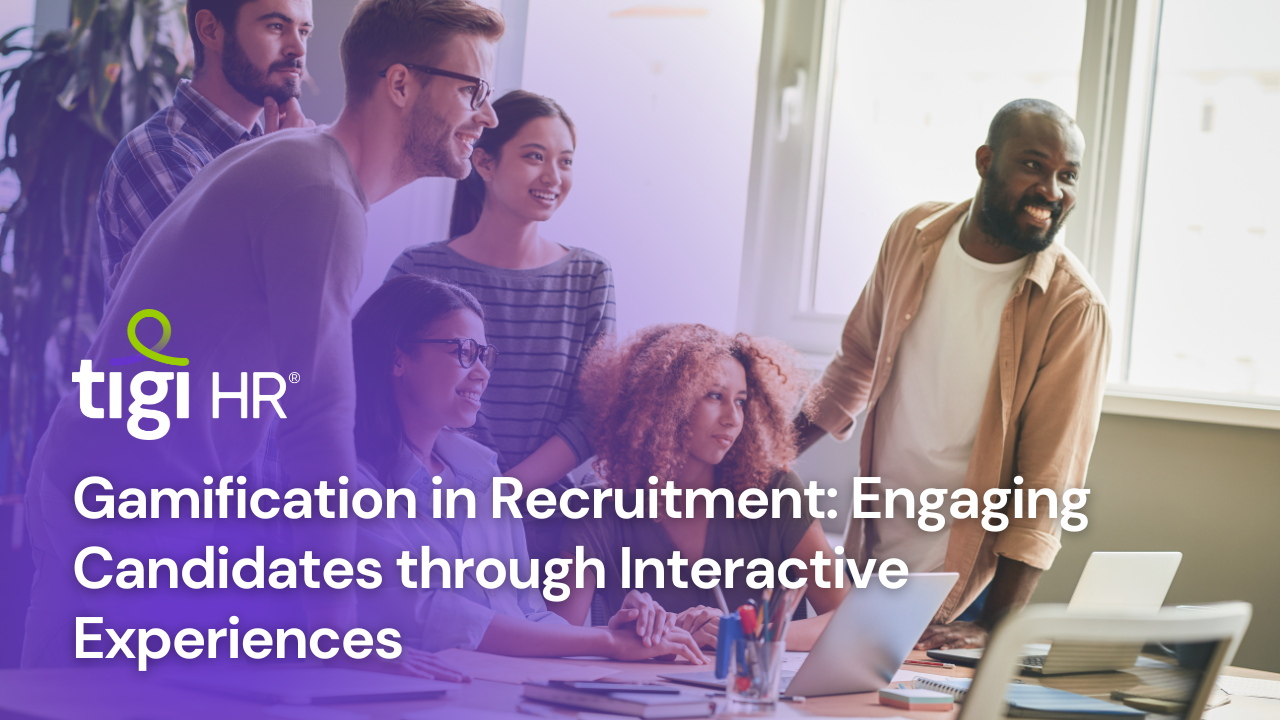In the ever-evolving landscape of recruitment, traditional methods are being reimagined to capture the attention of today’s tech-savvy and experience-driven candidates. One innovative approach that has gained substantial traction is the integration of gamification in recruitment process. By infusing elements of gaming into the hiring journey, companies are not only enhancing candidate engagement but also revolutionizing the way they identify top talent.
Understanding Gamification in Recruitment
Gamification involves applying game-like elements such as challenges, rewards, competition, and interactivity to non-game contexts. In recruitment, gamification transforms the hiring process into an interactive and dynamic experience. This approach aims to captivate candidates’ interest, evaluate their skills in real-world scenarios, and foster a sense of excitement throughout the application process.
The Power of Engagement
One of the core challenges recruiters face is grabbing and holding candidates’ attention in a competitive job market. Gamification addresses this issue by tapping into individuals’ natural inclination for play and challenge. By creating captivating recruitment experiences, companies can keep candidates engaged for longer periods, ultimately increasing the chances of finding the right fit.
Benefits of Gamification in Recruitment
- Enhanced Candidate Experience: Gamified recruitment processes provide candidates with a memorable and enjoyable experience. This positive encounter creates a lasting impression of the company’s innovative approach and commitment to candidate engagement.
- Skill Assessment in Action: Traditional assessments often fall short of accurately gauging candidates’ practical skills. Gamification allows candidates to demonstrate their abilities in simulated real-world scenarios, leading to more accurate skill assessments.
- Better Cultural Fit Evaluation: Gamification can integrate elements of company culture into the challenges, enabling candidates to experience the company’s values and work environment firsthand.
- Diverse Candidate Pool: Gamification’s interactive nature appeals to candidates from various backgrounds, including those who might be overlooked by traditional recruitment methods.
- Data-Driven Insights: Gamification platforms generate valuable data on candidate performance and behaviors. Recruiters can leverage this information to make informed decisions during the selection process.
Statistics and Insights
According to a report by Talent Board, candidates who participated in a gamified recruitment process were 31% more likely to be satisfied with their experience compared to those who underwent a traditional recruitment process. This highlights the significant impact that gamification can have on candidates’ perception of the hiring journey.
Furthermore, a study conducted by PwC revealed that 88% of millennials – a generation that makes up a substantial portion of the workforce – believe that gamification makes work more engaging. This statistic underscores the potential of gamified recruitment strategies to resonate with and attract young, digitally native candidates.
Real-Life Examples
Several companies have embraced gamification to reimagine their recruitment processes:
- Deloitte’s “Uncover the Deloitte Difference” Game: Deloitte developed an interactive game that immerses candidates in the firm’s culture and projects. Players make decisions and solve challenges similar to those faced by Deloitte professionals, giving them a taste of the work environment.
- PwC’s “Multipoly” Game: PwC created a game that mimics the challenges of managing a business. This game assesses candidates’ decision-making skills, teamwork, and strategic thinking, providing recruiters with insights into their suitability for PwC’s roles.
- McDonald’s “McGame”: McDonald’s introduced a mobile game in which players take on the role of a restaurant manager, handling various tasks such as staffing, inventory management, and customer service. The game helps candidates understand the responsibilities of the job while engaging them in an enjoyable experience.
Challenges and Considerations
While gamification offers substantial benefits, there are challenges to navigate:
- Design Quality: Poorly designed gamified experiences can detract from the recruitment process. It’s crucial to ensure that the game aligns with the company’s brand and values.
- Accessibility: Not all candidates are familiar with gaming interfaces, and some may feel uncomfortable with gamified recruitment. Providing alternative options is essential to accommodate all candidates.
- Bias Mitigation: Care must be taken to prevent biases from being introduced through gamification elements, ensuring a fair evaluation for all candidates.
Conclusion
In the age of digital transformation, gamification is emerging as a potent tool for engaging candidates in the recruitment process. By leveraging the innate human desire for challenge, competition, and interactive experiences, companies can create memorable and effective hiring journeys. The statistics and insights supporting the positive impact of gamification on candidate satisfaction and engagement are clear indicators of its potential.
As organizations seek to attract and identify the best talent, incorporating gamification into their recruitment strategies can set them apart. Real-world examples from leading companies demonstrate how gamification can be creatively integrated to provide candidates with a glimpse into the company’s culture and challenges. While challenges such as design quality and accessibility must be addressed, the benefits of gamification in recruitment are undeniable. As technology continues to evolve, gamification is poised to play an increasingly pivotal role in shaping the future of hiring, redefining the candidate experience, and driving innovation in the recruitment landscape.





